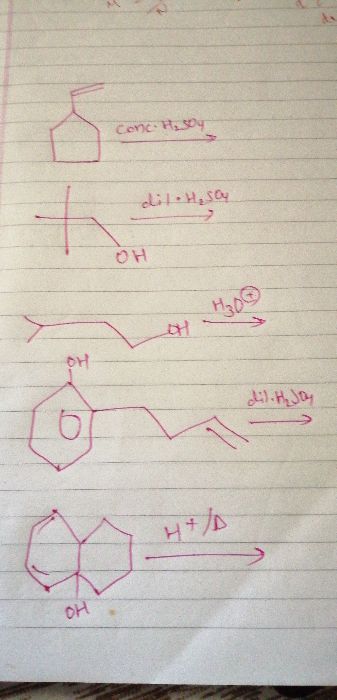CBSE Class 11-science Answered
Account for the greater reactivity and the o, p-orientation in electrophilic substitution of biphenyl despite the electron-attracting inductive effect of the phenyl group.
Asked by Topperlearning User | 25 Jul, 2014, 07:18: AM
In attack at the o-,p- positions the unreacted ring can stabilize the + charge on the attached C of the σ complex by electron-releasing delocalization that results in delocalizing the + charge to both rings. Such delocalization is impossible with the intermediate from meta substitution which does not have the + charge on the C bonded to the Ph substituent. The + charge cannot be incorporated into the second ring, and delocalization is confined to one ring.
Answered by | 25 Jul, 2014, 09:18: AM
CBSE 11-science - Chemistry
Asked by maibamjohnny89 | 15 Jan, 2022, 21:38: PM
CBSE 11-science - Chemistry
Asked by dubeyanubhav65 | 18 Jan, 2021, 21:52: PM
CBSE 11-science - Chemistry
Asked by guptaserendri | 01 Jul, 2020, 15:58: PM
CBSE 11-science - Chemistry
Asked by Topperlearning User | 24 Jul, 2014, 15:46: PM
CBSE 11-science - Chemistry
Asked by Topperlearning User | 25 Jul, 2014, 07:11: AM
CBSE 11-science - Chemistry
Asked by Topperlearning User | 01 Jun, 2016, 14:59: PM
CBSE 11-science - Chemistry
Asked by Topperlearning User | 01 Jun, 2016, 14:54: PM
CBSE 11-science - Chemistry
Asked by Topperlearning User | 04 Jun, 2014, 13:23: PM
CBSE 11-science - Chemistry
Asked by Topperlearning User | 25 Jul, 2014, 07:18: AM
CBSE 11-science - Chemistry
Asked by Topperlearning User | 01 Jun, 2016, 14:54: PM


